For every coffee enthusiast, a cup of real espresso is something to look forward to. It is a rich coffee brew with a beautiful crema that contains all the delicious flavors from the coffee beans. But, what happens if you don’t have or can not afford to buy an espresso machine? How to make espresso without the machine?
Luckily, there are some simple brewing methods you can try out from the comfort of your home. We found the ones that provide the best (most espresso-like) flavor and are very easy to make. Most importantly, we included step-by-step instructions to ensure that you can try out these methods at once.
IN THIS ARTICLE:
Let Us Define Espresso
Espresso is a highly concentrated type of coffee that is made using only hot water and freshly ground coffee. It is usually made using an espresso machine that creates a high extraction pressure and pushes the hot water through the coffee grounds (or the “puck”) inside the filter.
Can You Make Espresso Without A Machine?
So what if you do not have an espresso machine? There are several brewing methods you can try out, depending on what you have at home.
Accessories You Will Need
Now that we have established that you can indeed make espresso even if you do not have a machine available, there are some additional accessories you will need to make a perfect brew:
- coffee grinder – while you can use storebought pre-ground coffee, espresso tastes the best when it is made using freshly ground coffee. Additionally, when you have a grinder you can try out different coffee bean roasts and choose the one you like the best.
- a measuring scale – to brew the most perfect espresso you need to weigh out the water and the coffee grounds
- kettle – usually, an espresso machine heats the brewing water itself. Since you are not using a machine, you need to have another heat source available to heat the water. You can do this either by using an electric kettle or a simple stovetop pot.
Method 1: French Press
A French press is a top alternative choice for brewing espresso because it provides the most similar flavor. Now, it won’t provide you with a rich crema you would otherwise get but you will get a delicious smooth brew without any coffee grit.
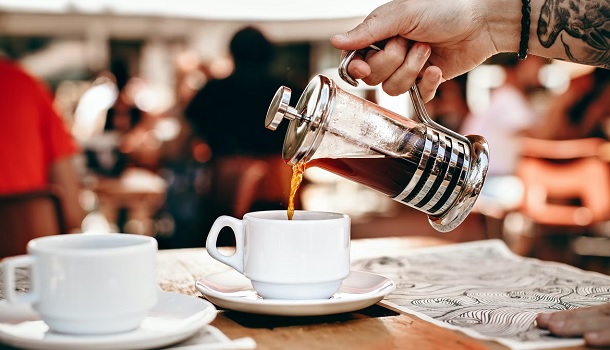

How To Make Espresso Using A French Press?
Here are very simple steps you can follow to make the most delicious French press:
- The first thing you need to do is heat the water using an electric kettle or a stovetop pot. Measure how much water you need (depending on how much coffee you want to make) and add a bit more into the kettle (so you have enough to heat the press).
- Once the water reaches its optimal brewing temperature (between 195 and 200°F) pour a bit of water into the press, swirl it around, and dispose of it. This helps to heat the press, and as a result, ensures that your brew remains at its optimal temperature for a longer time.
- Add your coffee grounds into the press. Use 1 full tablespoon of coffee per every 4 oz of water to get a flavorful brew. When it comes to a French press, medium-coarse grounds are the best choice.
- Now, pour the water over the grounds inside the press and stir the two together using a non-metal utensil.
- Place the plunger in its place and push the press down until it sits just above the water level.
- Leave the coffee to steep for 4 minutes.
- Once the time is up, press the plunger down and filter out all the coffee grounds from your brew.
That is it. Once you complete all these steps you will have a delicious brew ready for serving.
Method 2: Moka Pot
Now, a Moka pot provides a much richer, darker, and stronger coffee brew. It is the most beloved brewing method across Europe and Latin America. Similar to an espresso machine, it uses water pressure (in form of steam) to brew coffee. In the case of Moka pots, the pressure is much smaller (around 3 bars) compared to espresso machines (around 15 to 19 bars).
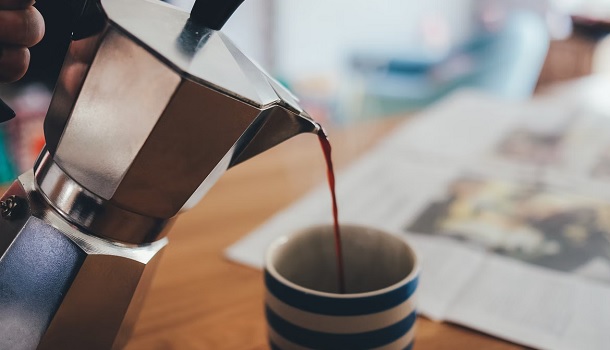

How To Make Espresso Using A Moka Pot?
While the process is a bit longer than with French press brewers, it is just as easy to complete:
- Preheat the water using an electric kettle – while Moka pots are made for stovetop use and can heat the water themselves, this will shorten the brewing process. It also helps to avoid over-extraction and coffee bitterness.
- Prepare your coffee grounds – grind your favorite coffee beans to fine grind size.
- Add grounds to the filter basket – add about 2.5 tablespoons of coffee grounds for a 4-cup brew. Once you fill-up the filter basket, level the grounds but do not tamp them down as this will only result in bitterness of the brew.
- Add the pre-heated water into the bottom water chamber – make sure that you do not go any higher than the safety pressure valve.
- Now, place the filter basket atop the water chamber – make sure that its tube points down to the water.
- Attach the two chambers – use a kitchen cloth to do this to ensure that you don’t accidentally burn your hands (at this point the water chamber will be pretty hot).
- Place the Moka pot on a stovetop burner – keep the lid open and make sure that the heat is at a medium-low setting.
- Keep an eye on the brewing process – as the coffee starts to brew you will be able to see the pressurized steam forcing coffee out of the chimney into the upper chamber. Once you notice that the chimney is starting to spurt, remove the pot from the stovetop.
Once you remove it, you can carefully pour yourself a cup of coffee and enjoy it hot and fresh.
Method 3: AeroPress
An AeroPress is a piston-style coffee brewer that forces water inside the chamber through the coffee grounds. During this process, it collects all the delicious flavors and coffee oils from your grounds. The coffee travels through a fine paper filter straight into your cup. Although it can make only a single or a double serving at a time, it is most beloved by those who spend a lot of their time on the road.
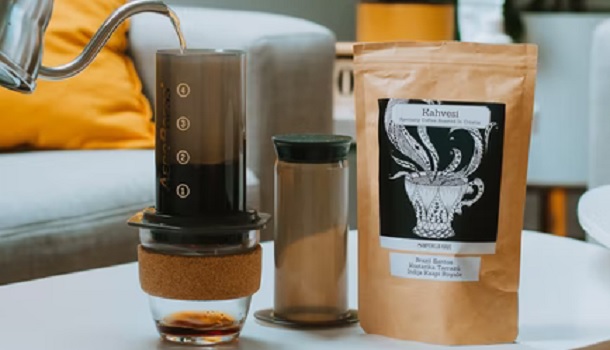

How To Make Espresso Using An AeroPress?
Although it does require a bit more manual force, Aeropress is also fairly easy to use:
- Use an electric kettle to heat the water for the press – electric kettles are the best for the job because you can control the heating temperature (it should be around 200°F).
- Prepare your coffee grounds – to achieve the best results you want to make a fine grind (not super fine as it will be hard to plunge the coffee). Grind about 18 grams or 3 tablespoons of coffee.
- Now, place the paper filter into its position (in the basket) and wet it until it is fully damp.
- Attach the said basket to the end of the Aeropress.
- Add the coffee grounds into the press and tamp them down very lightly.
- Place the Aeropress over a coffee cup.
- Add about 85 ml of hot water into the press and wait for about 45 seconds.
- At this point, place the plunger into the top of the press and push it down until it reaches the bottom of the press. You will need about 30 seconds to fully press the coffee down. Once you hear a small “hissing” sound, you reached the bottom.
Once you are done, remove the press from the coffee cup, dispose of the leftover grounds, and clean the press. To do this, simply unscrew the basket and press the plunger so it releases the filter and the grounds. Dispose of the grounds and rinse the press with some water.
Method 4: Portable Espresso Gadget
A small portable espresso gadget is the best way to brew an espresso while on the go. Keep in mind that this “gadget” is an actual espresso maker or machine if you will. However, it is not the same as a “regular” espresso machine as it uses much lower extraction pressure and you need to create the pressure manually, there is no automatic pump system inside the gadget.
If you have such a gadget, you can make an espresso shot no matter where you are, any time you want:
- Use your favorite coffee grounds and grind them into a fine coffee powder (again, not super-fine to avoid bitterness). Add the grounds into the filter until they lie flat with the edge.
- At this point, heat the water using a stovetop pot or a kettle and add it to the water reservoir to its top. Since the brewer does not have its own heating system, you can even try and make yourself a cold brew.
- Now, make sure that all the parts are securely attached to ensure that there are no accidental leakages.
- It is time to start pumping. Hold the upper part of the brewer and make a few manual pumps to create the needed extraction pressure. Once you do this, hold the brewer over your coffee cup and press the extraction button.
You will need some time to figure out how many manual pumps you need to make to achieve the best brewing results. Other than that, you should not have any problems brewing the coffee.
Method 5: Manual Lever Espresso Maker
This is another “machine” but it also requires manual force to extract coffee. The great thing about it is that you have complete control over the brewing process. This includes the brew strength, capacity, the pressure you use to extract the coffee, etc.
If and when used properly, these machines allow you to brew the most perfect espresso shot. Now, it is worth knowing that these brewers use a power source to heat the brewing water, however, it is up to you to create the extraction pressure you need to pull an espresso shot:
- First things first, turn the machine on and give it some time to heat up.
- During this time, grind your favorite espresso beans into a fine espresso grind. For the best results, use a conical burr grinder. If you do not have one, any coffee grinder will do just make sure to stop every few seconds to avoid burning the coffee.
- Now, remove the portafilter from the machine and fill it up with the coffee grounds. Tamp them down using about 30 pounds of pressure. While this may seem a bit abstract now, you will get the hand of this step very quickly.
- Place the portafilter back into its position and put your espresso cup underneath it.
- At this point, you want to slowly raise the lever. Once it reaches the top wait about 10 seconds before you push it down. Make sure that you do this with an even and a steady pressure to get the optimal brewing results. It should take you about 20 seconds to push the lever down completely.
The only “troublesome” part of this brewing process is creating the perfect pressure. You don’t want to under-extract the coffee as it will have a weak flavor, but you don’t want to over-extract it either as it will have a burnt flavor. After about 2 to 3 brews, you should have the hang of the process.
When Out Of Options…
Now, if you don’t have any of the accessories we talked about above (i.e. a French press, AeroPress, etc.) you can use a pan to make espresso. Keep in mind that this brewing trick will not provide you with authentic espresso-like flavor. However, it does come in handy when you don’t have another option:
- Pour one or two cups of water into your pan
- Place the pan over a direct heat source and wait for the water to boil
- Once it does, add your coffee grounds to the pan and remove it from a heat source
- Let the coffee steep for about 4 to 5 minutes
- After this time has passed you can pour yourself a cup of coffee (to avoid having coffee grit in your brew you can pour it over a fine mesh strainer)
What About Other Espresso-Based Beverages?
Once you get the hang of breeding espresso using these alternative methods, you can make almost any espresso-based beverage:
Macchiato, Lattes & Cappuccinos
Macchiato, lattes, and cappuccinos are all made using espresso as a base and a certain amount of steamed milk and milk froth:
- a macchiato is made by adding a spoonful of thick milk froth into the espresso shot
- a cappuccino is made using 1/3 espresso, 1/3 steamed milk, and 1/3 thick milk froth
- a latte is made using 1/3 espresso and 2/3 milk – about 50% steamed milk and 50% thick milk froth
The easiest way to make these beverages is using the French press method. This is because the press can conveniently work as a frother too. Everything you need to do is add some cold milk into the press and plunge the press a few times until you have a perfect froth. Now, for the steamed part, you can heat the milk and then plunge it the same way but to a somewhat smoother consistency.


Once you have your base, you can try and make vanilla lattes or caramel lattes by adding additional flavor to them.
Cuban Coffee
Cuban coffee is a sweetened version of espresso. It is also made using a dark espresso roast that provides it with a rich flavor. It is originally brewed using a “Cafetera“, or as we know it, a Moka pot. So, if you have one, you are settled. The process of making Cuban coffee is pretty much the same as making espresso:
- Grind your coffee beans, add them into the filter basket (but do not tamp), add water into the bottom chamber, attach all the parts, and place the pot over a heat source.
- Here comes the difference, Cuban coffee is relatively sweet. So you need to weigh out how much sugar you like to have in your brew and place it into a cup.
- Once the coffee starts to appear in the top chamber of the pot pour it immediately over the sugar. Add enough to moisten all the grounds.
- Beat the sugar and coffee together until you get a delicate caramel-colored foam – espumita.
- Once the rest of the coffee is done brewing, pour it into your espresso cups without breaking the espumita.
Cafe con Leche is another type of Cuban coffee you can make using a Moka pot. It consists of an unsweetened espresso shot and steamed whole milk. To create the “steamed milk” you can follow the same steps as for macchiato, latte, and cappuccino.
Science Behind Brewing Espresso
While espresso has become a regular day-to-day thing in our lives, there is a bit of science to the perfect espresso shot:
Water Temperature
The first key ingredient for a perfect espresso brew is the optimal water temperature. For the best results, it should be set at around 200°F or 93°C, just below the boiling point. In case you use water at a lower temperature, you won’t be able to extract all the flavors and coffee oils from your grounds. On the other hand, if the temperature is too high, you will only burn your coffee and, as a result, have a bitter brew.
Which Coffee Roast Should You Use?
The most common coffee roast for espresso is a dark roast. However, you can try out different roasts until you find the one you like the best.
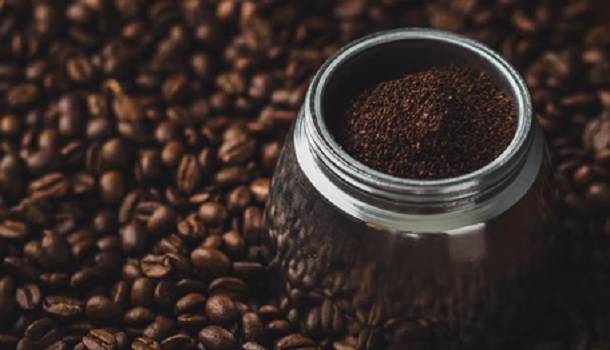

Optimal Grind Size
The grind size depends on the type of brewing method you are using. While espresso is usually made using a fine grind, in the case of a French press brewing method, you want to opt for a medium-coarse grind.
What Is Espresso Powder?
While this may sound like instant coffee and is tempting to use, don’t. Espresso powder is made out of dehydrated espresso and is most often used in baking. If you try to brew espresso with it you will only get a watered-down version of something that resembles espresso.
FAQ: More About The Alternative Brewing Methods
Now that we have covered all the best brewing options and brews you can make, here are the answers to the most frequently asked questions on this topic:
Can You Make Espresso With A Regular Coffee Maker?
No, you can not. This is because an espresso machine uses extraction pressure to pull a shot whereas a “regular” or drip coffee maker uses gravity to do the same.
Can You Make It Using Regular Coffee?
Technically, you can, but we do not recommend this. Using regular coffee grounds will result in a tart and sour espresso. When possible, use the dark roasts that are made for espresso and provide a beautiful and rich crema.
How Is Espresso Different From Regular Coffee?
Espresso differs from drip coffee in:
- brewing process
- caffeine percentage – espresso has a lot higher concentration of caffeine per ounce. That being said, espresso is usually served as a single shot (1 oz) and it contains about 40-75 mg of caffeine whereas drip coffee is served in a regular cup (8 oz) and it contains about 85-185 mg of caffeine.
- the flavor – espresso has a much richer and full-bodied flavor. It contains all the aromas and the coffee oils from the coffee grounds you use to brew it.
Why Does It Taste Better?
Because of its pressurized brewing process, espresso contains more coffee bean solids than regular drip coffee, and therefore, has much more flavor in it.
Is It Healthier?
The great thing about espresso is that you can enjoy it as it is. There is no need to add sugar or milk to it, so yes, it is a healthier option than a cappuccino, latte, etc.
What About The Pour-Over Method?
If you use a pour-over method you are more likely to get something like drip coffee than espresso. This is because the pour-over brewing process also uses gravity to dispense coffee.
To Wrap It Up
By now we are sure that you know that you don’t need any special expertise or training to brew a good cup of espresso even when you don’t own an espresso machine. You can use the everyday kitchen equipment you have at home and enjoy a shot of espresso next to your TV or while on your family camping trips.
The only three things you need to keep in mind that will always get you the best brew are coffee roast, grind size, and pressure. Once you master these key elements, you will be able to make barista-style beverages with as little effort as possible.

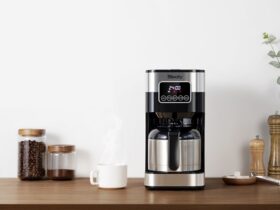
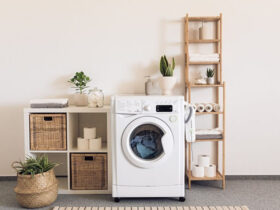
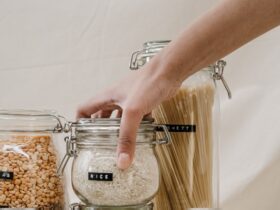
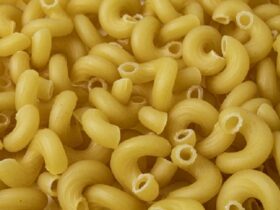
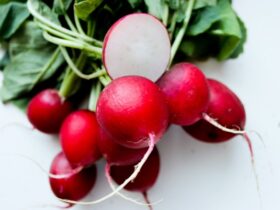
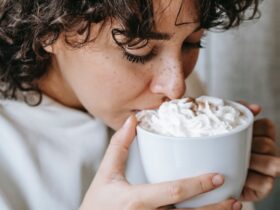
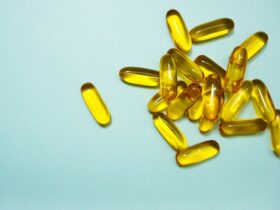
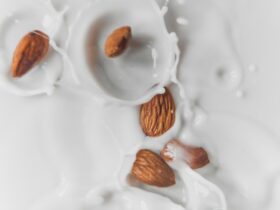
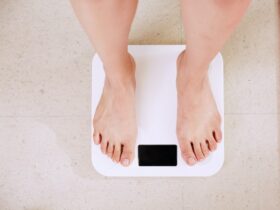
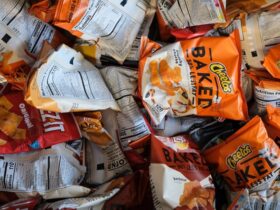
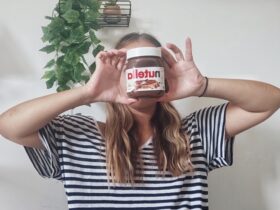
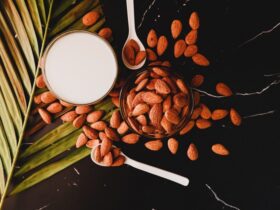
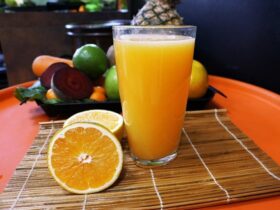

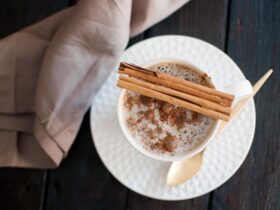
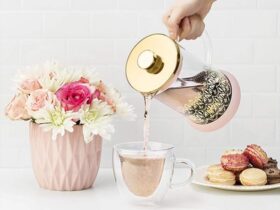
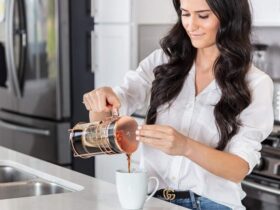
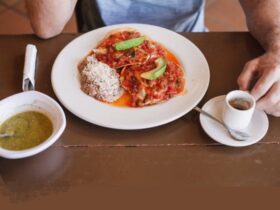
Leave a Reply